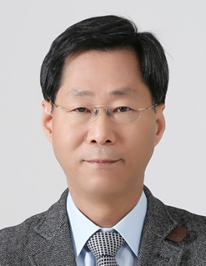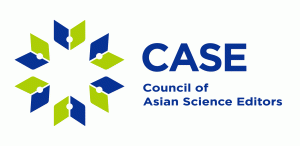The 10th Anniversary Conference of the KCSE

Tae-Sul Seo | Chairperson, Committee on Information Management of KCSE & Principal Researcher, National S&T Data Strategy Team of KISTI
On September 8th, a conference commemorating the 10th anniversary of the Korean Council of Science Editors (KCSE) was held online with the theme of “The Next Decade of Scholarly Publishing.” The entire program consisted of a plenary session and two parallel sessions. Here, I introduce Session B, which I attended. Session B was chaired by Hyungsun Kim, professor emeritus of Inha University, who was also the 3rd president of KCSE and the current president of CASE. During the session, three presentations were given by Elsevier, cOAlition S, and Crossref.The first presentation was given by Wim Meester, Director of Product Management of Elsevier, under the theme “Evolution of Scopus over the Next Decade.” He started by looking back at the 17-year history of Scopus, and then introduced the size of Scopus’ scholarly journals, its contribution to the research community, and how to select journals. In his presentation, he also cited data from Scopus to highlight Korea’s research achievements. Regarding its prospects over the next decade, he said that the Scopus’ vision is “Help the world of research makes high-value decisions with confidence,” and some of the key challenges are discovering the most relevant research, identifying experts and collaborators, evaluating and demonstrating impact, making decisions on research strategies, and applying and analyzing funding. To this end, the author profile of Scopus includes preprints and relevant funding information. Ultimately, he hoped that Scopus People Finder would help recruit reviewers and discover collaborators.The second presentation was given by Johan Rooryck, Executive Director of cOAlition S under the theme “Plan S: Estimating Future Developments.” He explained that the plan’s goal is to promote open access (OA). cOAlition S is composed of 27 global funders and has published 150,000 papers with an annual research grant of $40 billion. Plan S is a policy prepared as part of an effort to give more researchers and artificial intelligence immediate and free access to articles funded by member institutions. To comply with Plan S, researchers should publish in open access journals (route 1), upload AAM (Author Accepted Manuscript) to the repository through an agreement with the publisher (route 2), or belong to an institute that has entered into an OA transformative agreement (route 3). In addition, cOAlition S is conducting research on OA Diamond Journal publication, improving publication cost transparency, and supporting new publication models. Over the next 10 years, OA will be using a mix of commercial and institutional publishing service providers and strengthening the role of academic organizations; the fragmentation of publishing services was mentioned as a key challenge in this regard.The third presentation was made by Ed Pentz, Executive Director of Crossref, under the theme “The role of Crossref in journal publishing over the next decade.’’ He said that Crossref is a non-profit organization whose mission is to make research results easy to find, cite, link, assess, and reuse, as well as to improve scholarly communications. Crossref makes it possible to identify and cite research funds, preprints, journal articles, monographs, proceedings, standards, reports, dissertations, and review reports through DOI. The number of DOI registrations of Crossref is continuously increasing, with approximately 88 million registered journal articles. Crossref considers transparency, new OA models, preprints, data, and artificial intelligence to be key issues for scholarly journals in the next 10 years. To this end, it is involved with the Principles of Open Scholarly Infrastructure (POSI). In addition, the Research Nexus is also being promoted to support reproducibility and discoverability through various metadata collected using DOI.
